ABOUT JEAN MARIE MASSAUD
Since the start of his career (he graduated from ENSCI-Les Ateliers de Paris in
1990), Jean-Marie Massaud has worked on a wide range of projects, from
architecture to objects, from single projects to series, from
macro-environments to micro-contexts.
Major brands such as
Axor, Cassina, Christofle, Poliform and Toyota have called on his ability to
blend comfort and elegance, zeitgeist and heritage, generosity and distinction.
Beyond these elegant
designs, his quest for lightness - in essence - synthesizes three broader
issues: individual and collective fulfillment, economic and industrial
efficiency, and environmental concerns. "I try to find an honest and
generous path with the idea that, somewhere between hard economic data, there
are users, there are People."
His creations, whether
speculative or pragmatic, explore this imperative paradigm: reconciling
pleasure and responsibility, the individual and the collective.
When asked to imagine a
new stadium for the city of Guadalajara, Mexico, he returned with a novel
building in the shape of a cloud and a volcano, integrated into a vast urban
development program that would bring together leisure and culture, nature and
urbanization, sports aficionados and local citizens. Instead of a stadium, he
proposed an environment. And the initial vision proved realistic: the project
saw the light of day in July 2011.
MILESTONES
1966 Birth
in Toulouse (France)
1990 Graduation
from ENSCI-Les Ateliers
1990-91 Works
in Hong Kong on mass-production design
1991 Submarine
project with Yamaha Offshore
1992-96 Collaboration
with Marc Berthier
1995 Carte
blanche VIA
1996 Creation
of his own design studio
1999 Monographic
exhibition « Think Horizontal - Massaud » at the Musée des
Arts
Déco
2000 Némo
(Cacharel), his first perfume bottle.
Founds the Studio Massaud with
Daniel Pouzet for architecture and design
project
2001 Starts
collaborating with Cappellini
2003 Conceptual
and architectural identity for Lancôme
2005 Monographic
exhibition « Human Nature – Massaud », Time&Style in Tokyo.
Monographic book « Human Nature –
Massaud »
Begins the Manned Cloud project
(flying hotel) with the ONERA
2006 Begins
collaborating with B&B Italia
2007 Monographic
exhibition at the VIA gallery in Paris
Monographic book « Jean-Marie
Massaud », Daab
« Designer of the year 2007 »,
Salon du Meuble
2009 «
Designer of the year 2009 », Salon M&O Now ! Design à vivre
« Designer 2009 », Paris Capitale
de la Création
Becomes the new art and creative
direction of Environment
2010 Opening
of the Volcano Stadium in Guadalajara, Mexico
Opening of the B&B Showroom in
Paris, France
2011 Compasso
d’Oro for the Yale sofa (MDF Italia)
2012 Wallpaper*
Design Award for the Seax folding chair edited by Dedon
2013 Presentation
of the MeWe concept car at the Toyota showroom in Paris
2014 Wallpaper* Design Awards – category « Best Room Mates » for GranTorino
edited by PoltronaFrau
Muuuz International Awards-MIAW
2014
Best Sofa for Airberg
edited by Offecct
2015 German
Design Council Interior Innovation Award - Rock Table by MDF Italia
Red Dot Design Award (Product
Design) - Massaud Work Lounge edited by
Coalesse
2016 Etoile de l'Observeur du Design (A.P.C.I ) - Services La Première & Business à
bord by Air France
Wallpaper* Design Award (Best home
office) - Seattle by Poliform
GREEN GOOD DESIGN™ Award - Green Islands Collection by
Offecct
Red Dot Design Award (Product
Design) - Scarlett by Poltrona Frau
2017 Wallpaper*
Design Award « Best of the Best » - Lloyd by Poltrona Frau
ICONIC AWARD Interior Innovation «
Best of the Best » - AIKU by MDF Italia
2018 Wallpaper* Design Award Winner 2018 « best uchi » - Home Hotel Bench by
Poliform
2019 Red
Dot Design Award « Best of the Best » - Edge Collection by Axor
Wallpaper*Design award Winner 2019
« best refelective space » - Creek coffee
table by Poliform
2021 Wallpaper*Design
award Winner « best curves » - Le Club by Poliform
FD100 Awards Winner - LE
FRENCH DESIGN by VIA
2022 IDEAT
DESIGN AWARDS Winner « Best Chair » Neil by MDF Italia
Furniture Archiproducts Design
Awards - ADA - Universal Chair by MDF Italia
2023 Wallpaper* Design Awards « Best Silhouettes » - Lloyd TEXT bookcase
by Poltrona Frau
Wallpaper* Design Awards «
Best Silhouettes » - Mush table by Poliform
2024
Red Dot Design Award Winner « Product Design
» - Milos by Vondom
https://www.massaud.com/en/bio/
WALLACE
2010
A new type of armchair with a foam-injected leather cushion
In an attempt to bring together the rationality of an industrial process and the refinement of leatherwork, Wallace was an experiment that resulted in a new typology of furniture. The injection of plastic foam between two sheets of leather creates a cloud-shaped armchair offering contemporary comfort and a relaxed attitude.
UBE STOOL 2022
The Ube stool is an element of rupture, a work of art serving the functionality of the living area. Inspired by the seed of the coco de mer, a tropical fruit with an evocative and sensual shape, the stool has a distinctive concave shape, forming a comfortable cradle to sit on. Radical also in its realisation, it is made from a block of solid wood, in the classic olmo nero finish.
The club armchair is a
singular and iconic figure in twentieth-century living because of the symbols
it represents, the images it evokes and the rigorous standards required to make
it. The Club retains the lines, curves and incomparable comfort of the chairs
that inspired it, but lightens the mass to give it a more relaxed, contemporary
elegance.
One ambition of the project was to combine the skills of craftsmen with cutting-edge technology. The fabric or leather seat is not movable; it adheres perfectly to the steel frame and moulded polyurethane seat to become a testament to the mastery and quality of the craftsmanship. The fruit of Massaud's holistic approach, LE CLUB is unique without being arrogant, chic and easy, modern and timeless, comfortable and intelligent.
‘’ I wanted to degrease this icon dedicated to the comfort for oneself of all useless matters and all ostentatious and statutory clichés. I only propose to keep the simplicity, the lightness, the elegance and the obviousness of the layout in the service of unprecedented suspended comfort.’’
STANFORD ARMCHAIR 2016
Compact yet spacious, statutory yet light, radical yet refined, Stanford is the ideal armchair for multiple use in the living room.
Its architecture is simple, enveloping yet distinguished, and each of its components is crafted using the highest quality techniques and know-how. The signature of massaud-poliform excellence. Stanford's natural elegance stems from the lightness of its design: a thin, wraparound seat, like a dress, on a narrow cast aluminum frame.
ERNEST SOFA 2024
With Ernest, Jean-Marie Massaud tackles the theme of comfort in a radical way. The result of this approach, which makes modularity its strong point, is a sofa with soft, deconstructed volumes inspired by a down cushion for natural comfort. The juxtaposition of the different elements results in small or large, linear or L-shaped sofas, without ever losing the expressive power of the design.
POLIFORM FURNITURE
COMPANY
When
Alberto Spinelli, Aldo Spinelli and Giovanni Anzani founded Poliform in the
Brianza Furniture District in 1970, the foundations comprised a know-how
culture, work ethic and entrepreneurial vision, combined with technical
knowledge and mastery in design. A heritage that lives and thrives in Poliform
today.
OUR
DESIGN PHILOSOPHY
Cultured
and contemporary beauty, timeless elegance and technical excellence. Poliform’s
design philosophy is embodied in systems and accessories capable of blending
with ambient architecture, linked by a unique and recognisable aesthetic
appeal.
OUR DESIGNERS
We partner with some of
the most well-known and exciting designers on the international scene.
Jean-Marie Massaud, Marcel Wanders Studio, Emmanuel Gallina, Studio Kairos and
Soo Chan are just a few of the designers who, over the years, have shared ideas
and inspirations with us to create products capable of interpreting Poliform’s
style and design culture.
MADE IN ITALY INDUSTRY
Poliform’s excellence
owes a great deal to the Brianza area, north of Milan, the historic birthplace
of Italian styling and furniture design.
POLIFORM RESEARCH &
DEVELOPMENT
In the
Research&Development department, architects and engineers work on new
projects and design solutions with the creative input of partner designers. It
is no coincidence that Poliform’s most representative projects have always been
systems, complex projects that require a great deal of technological and
typological research.
TRENDS AND SELECTION OF
MATERIALS
Design always goes hand
in hand with research into trends and a meticulous selection of materials and
finishes, in accordance with an idea of style that expresses its character and
uniqueness in the harmony of the tones, the elegance of the combinations and
the quality of the tactile experience.
SUSTAINABILITY
We operate ethically and
responsibly, both towards our community, caring for the quality of the
workplace and the satisfaction of our employees, as well as towards the
environment, selecting processes and materials that respect natural resources.
‘’We believe research as
a driver of innovation and change: each Poliform product line has a dedicated
Research & Development team.
OUR HISTORY
Poliform was founded in 1970 on the initiative of Alberto Spinelli, Aldo Spinelli and Giovanni Anzani, who transformed the family’s artisan business established in 1942 into a modern industry. The new name signalled a departure from the past, suggesting flexibility, simplicity, elegance and openness to the future.
https://www.poliform.it/en/poliform-world/a-human-company/
“Poliform is a family, a
team, a vision. But above all, it is a brand that has a unique way of creating
a sophisticated and timeless elegance.”
Jean-Marie Massaud
MONDRIAN
SOFA 2016
Architectural, comfortable and timeless, Mondrian offers an elegant way to experience modernity with refinement.
The particular attention paid to the articulation of the "hard and soft" elements and sub-elements, the quality of the proportions and the 95cm module depth offer great program versatility, from the most compact to the most landscaped, always with rhythm and harmony. Mondrian asserts itself as the new sofa-system combining the universal, magnifying above all the quality of the experience.
SEATTLE CHAIR 2015
Contemporary design, inspired by tradition. The Seattle chair stands out for the careful craftsmanship of its leather upholstery, with broguering stitching and punching inspired by traditional elegant British footwear. A unique product that makes attention to detail its special feature. The legs are upholstered in leather, as are the seat and backrest that act as a shell to offer a superior level of comfort.
SAINT GERMAIN 2021
Saint-Germain is a sofa system with sinuous, sensual shapes.
Inspired by organic shapes
reminiscent of 1970s design, it transforms any space into a warm, familiar
landscape, infusing a pleasant sense of comfort into the home.
Soft, enveloping lines recur in all elements of the collection, which includes various modules with to create compositions of linear, angular or unusual shapes, always characterized by inviting interplays of form and depth.
From the haute couture materiality of looped fabrics to the contemporary elegance of leather, the upholstery sublimates the full, voluptuous volumes of Saint-Germain, making its aesthetics transversal.
KENSINGTON TABLE 2018
The Kensington sculptural table is characterized by the structure's circular modules, which support a top composed of elements of different shapes and sizes.
Round or rectangular, Kensington is a majestic and striking table, a work of art for the living room or hall, to be customized with precious finishes.
SYDNEY SOFA 2016
Comfort and conviviality space, Sydney sofa offers to live the experience of
the living room with modernity, elegance and relaxation.
With a unique profile,
like in levitation, let discover the smartness and simplicity of its system,
structure. Even its pillows, as a composition of “softened pebbles” convey the
uniqueness of this obvious concept. Functional complements, sober solid wood
sculptures offer simple, strong and consistent punctuation to this
system.
‘’We develop a singular,
sensitive and progressive approach. Our comprehensive questioning of innovation
is desirable, responsible and sustainable.’’
Jean Marie Massaud
JEAN MARIE MASSAUD
MANIFEST
A HOLISTIC APPROACH
Human beings, our
societies and our environment are at the heart of our thinking: a quest for
harmony that reconciles fulfillment and responsibility.
Our vision invites us to
consider each project in all its dimensions: sensory, physiological, emotional,
cultural, conceptual and functional.
A relevant contemporary
project is about "meaning", "essence" and
"quintessence": the purpose, its formalization and the life that
accompanies it.
What interests us more
than anything else is the integration of products into "life
programs" that attempt to respond with harmony and refinement to the
challenges of our times.
ELEGANT SYNTHESES
We strive to synthesize
these ideas in designs and architecture that are fair, intelligent and
progressive, combining innovative uses, lightness and elegance.
The relevance of our
syntheses is embodied in the symbolism of our designs, the quality of our
proportions and our attention to detail.
We cultivate an intuitive
and exploratory approach, committed to offering new perspectives to users,
producers and society.
SUSTAINABLE SOLUTIONS
Our team's ambition is to
design responsible, symbiotic and enduring solutions; complicit realizations of
our lives that we love for a long time to come.
We aspire to replace
quantitative production models with new approaches that are light, elegant,
timeless, desirable and qualitative.
Innovation must be a
means of conceiving new, more symbiotic models of fulfillment and more virtuous
economic models.
































































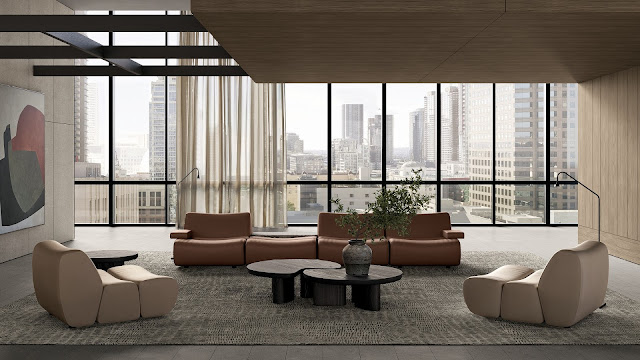

















































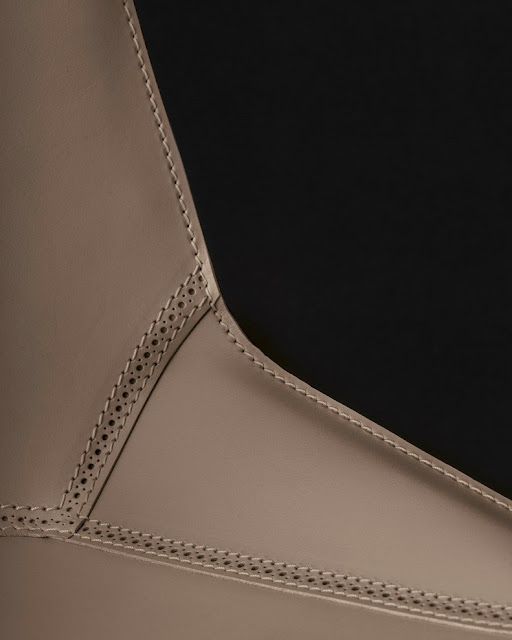










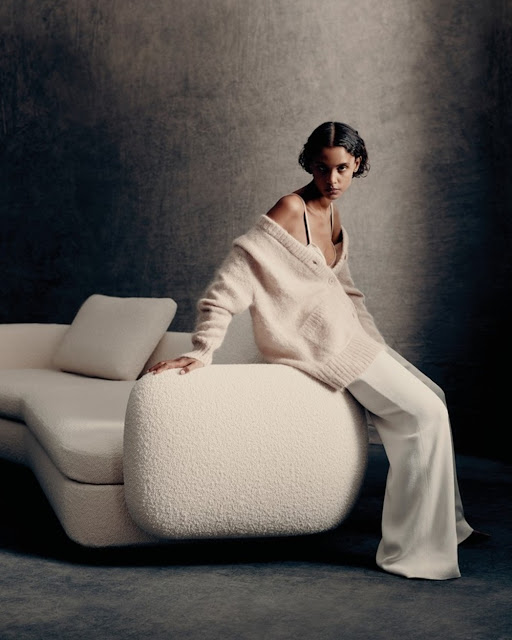












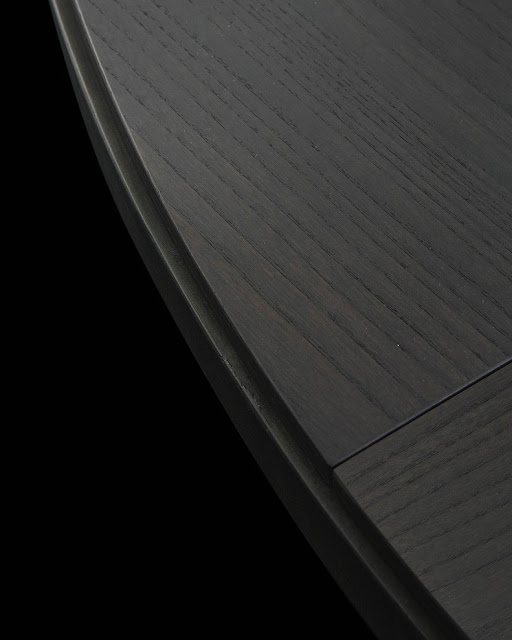












.webp)



.webp)




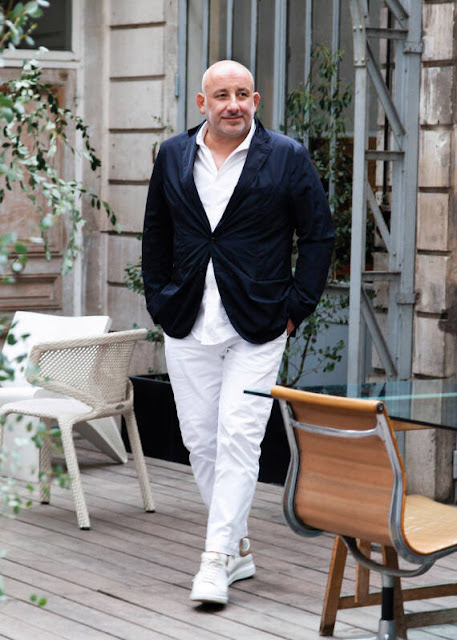







.png)